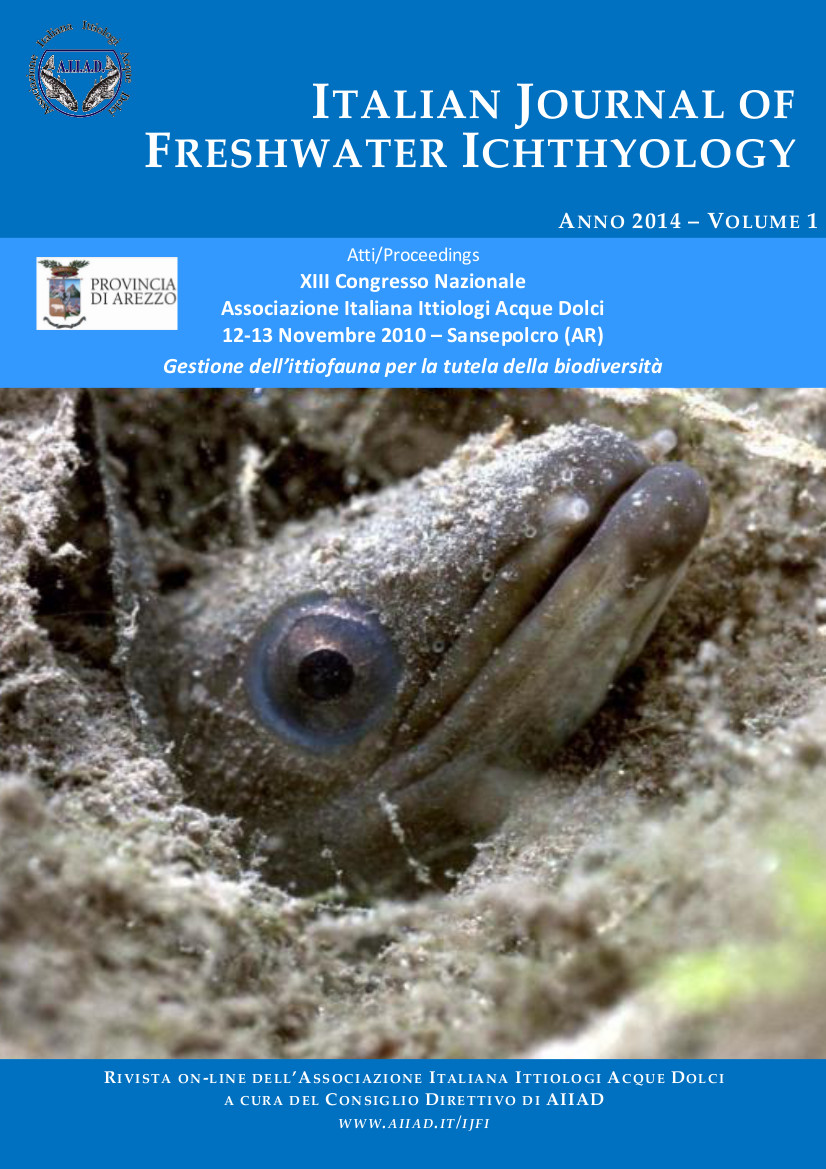First molecular characterization of twaite shad Alosa fallax (Lacepede, 1803) from Italian populations based on Cytochrome b gene sequencing.
Abstract
In this work, five Italian populations (46 samples) of twaite shad Alosa fallax from Northern and Central Italy were investigated to assess genetic diversity at intraspecific level. Moreover, six samples of allis shad Alosa alosa from the Garonne River were also analyzed, to determine genetic variability among this two related species. The aligned sequences of the Cytochrome b mitochondrial gene were 420 bp long. The total number of mutations within Alosa sp. sequences was ten; four mutations were identified within Italian sequences. All the Italian samples were recognized at specific level as A. fallax, differing for five fixed mutations (positions: 147, 240, 330, 423, 468) from the French samples of A. alosa. The analyses confirmed the occurrence of a single shad species in Italian waters. The Minimum Spanning Network identified two haplotypes for A. alosa and six haplotypes for A. fallax. The Neighbour-Joining tree and the Maximum Likelihood on the Cytb gene sequences revealed the same topology, confirming two distinct lineages for A. alosa and A. fallax, without evidence of a separation at specific level within A. fallax group. A weak separation due to ongoing speciation process was detected between anadromous and landlocked Italian populations, supporting the idea of a recent Pleistocenic separation. Therefore, the consideration of existence of the incipient species Alosa agone is still controversial.


